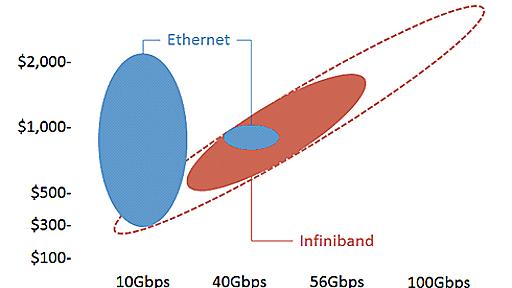

本記事の原文はNutanix社のGlobal Engineering / R&D TeamでManager Business Critical Appsを務めるMichael Webster氏によるものです。原文を参照したい方はYour Network Is Too Slow For Flash And What To Do About Itをご確認ください。情報は原文の投稿時のままの情報ですので、現時点では投稿時の情報と製品とで差異が出ている場合があります。 当社のNutanix社製品についてはこちら。本ブログのNutanix関連記事のまとめページはこちら。 フラッシュの技術がデータセンタの形を変えつつあることに疑いを持つ方はもうおられないでしょう。ロックバンドのクイーンは30年以上も前にそれを理解していたようですが!フラッシュはハイパフォーマンスアプリケーションの展開のための経済性を変

Datacratic's intent-based retargeting technology is now part of iperceptions Get expert guidance in measuring and optimizing the effectiveness of your marketing campaigns with iperceptions ©2017 Datacratic. All Rights Reserved. All other trademarks, logos and brand names on this website are the properties of their respective owners.

Good morning! In a recent blog post we explained how to tweak a simple UDP application to maximize throughput. This time we are going to optimize our UDP application for latency. Fighting with latency is a great excuse to discuss modern features of multiqueue NICs. Some of the techniques covered here are also discussed in the scaling.txt kernel document. CC BY-SA 2.0 image by Xiaojun Deng Our expe

You are correct that frequencies that high would be completely unmanageable. Sending one bit per frequency would cause problems for various types of radio transmissions as well. So we have modulation techniques which allow more than one bit to be send. A touch of terminology: baud, most people will remember that term from the days of telephone modems, is the symbol rate at which a communications m
2. 40/100GbEの物理限界を知ろう 40GbE PCI Express Gen2 NIC* PCIe Gen 2.0 x8 interface, 32Gbps 8b/12b line encoding, 20% overhead, 25.6Gbps 40GbE PCI Express Gen 3 NIC* PCIe Gen 3.0 x8 interface, 1GB per lane or 64Gbps 64/66 line encoding, 3% overhead, 62.0Gbps 100GbE PCI Express Gen 3 NIC?** PCIe Gen 3.0 x16 interface, 128Gbps 64/66 line encoding, 3% overhead, 124.1Gbps *SOURCE: Evaluation of 40 Gigabit Eth

This testing looked at iperf performance and CPU utilization (using vmstat) of the Neterion Xframe1 and the Intel IXGB 10GbE adapters. I tested different sysctl and MMRBC parameters along with varying numbers and directions of flows. Summary: In the best case of single stream, single direction throughput, the Xframe1 sustained ~6.4Gb/s. The IXGB sustained 5.6-5.9Gb/s. CPU utilization was high for

The aim of this post is to point out potential kernel tunables that might improve network performance in certain scenarios. As with any other post on the subject, make sure you test before and after you make an adjustment to have a measurable, quantitative result. For the most part, the kernel is smart enough to detect and adjust certain TCP options after boot, or even dynamically, e.g the Sliding
We are now (2006) in an era where the CPU is no longer rate determining in an LVS director. Ratz 20 Feb 2006 The processor never is an issue regarding LVS unless your NIC is so badly designed that the CPU would need to take over the packet processing ;) (a non-LVS article on Configuring large scale unix clusters by Dan Kegel.) The article performance data for a single realserver LVS, shows how to
Our last article on Disqus: How Disqus Went Realtime With 165K Messages Per Second And Less Than .2 Seconds Latency, was a little out of date, but the folks at Disqus have been busy implementing, not talking, so we don't know a lot about what they are doing now, but we do have a short update in C1MM and NGINX by John Watson and an article Trying out this Go thing. So Disqus has grown a bit: 1.3 bi

The latest round of our ongoing Framework Benchmarks project is now available! Round 9 updates several test implementations and introduces a new test environment using modern server hardware. Since the first round, we have known that the highest-performance frameworks and platforms have been network-limited by our gigabit Ethernet. For Round 9, Peak Hosting has provided a high-performance environm
市場に出回る汎用部品だけで実現したハードウエアである「ホワイトボックス」が、高性能ネットワークスイッチの分野で登場し始めた。2013年8月には、日本のACCESSが、台湾製スイッチに自社製ソフトを搭載して販売することを発表した。 ACCESSが発表した「AEROZ(エアロス)」(図)は、高さ1Uの筐体に10ギガビット/秒のイーサネットポートを48個搭載する。価格は120万円で、大手メーカー製の3分の1以下という価格破壊を実現した。 AEROZはSDN(ソフトウエア・デファインド・ネットワーキング)を実現するプロトコルである「OpenFlow」に対応し、SDNコントローラーから、複数のスイッチを集中制御できる。「ネットワーク機器に必要な機能をソフトで実現するSDNの世界では、スイッチのハードはコモディティ化が進むと言われていた。しかし実際には、安価なスイッチがなかなか登場していない。そこでソ

では、なぜいまWebサービスに高速ネットワーク技術が必要なのでしょうか? 高速ネットワーク技術とサーバ性能の現状を見ながら、その理由を解き明かしていきましょう。 拡大期を迎えるモバイルインターネット 米Morgan Stanleyは2009年に行った調査で、2014年ごろには、モバイル環境からのインターネットユーザー数がデスクトップ環境のそれを追い抜くだろうと予測していました(図3)。この調査から3年が経とうとしている現在、予想はまさに現実のものになろうとしています。モバイルインターネットの利用拡大は目覚ましく、家庭にも個人にも深く浸透してきています。 さて、モバイル環境向けに提供するWebサービスでは、ワイヤレスデータ通信網を考慮して、コンテンツ自体を小さく作るよう心掛けるはずです。これにより、小さなパケットを大量に送受信できるWebサーバの重要性が必然的に増しており、「ネットワーク帯域

リリース、障害情報などのサービスのお知らせ
最新の人気エントリーの配信
処理を実行中です
j次のブックマーク
k前のブックマーク
lあとで読む
eコメント一覧を開く
oページを開く